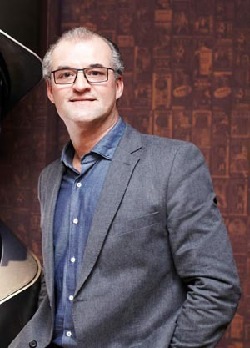reDesign
Updated: 2012-02-16 13:07
By Gan Tian (China Daily)
|
|||||||||||

The country has a long way to go to cultivate creators who can work across fields. Gan Tian reports.
Christian Schwamkrug spent days trying to decipher the similarities between a glass of whisky and a sports car in 2010.
Schwamkrug is design director of the Porsche Design Studio, an Austria-based company best known for its design of the Porsche 911.
He was then dealing with a client from an entirely different industry - liquor.
Schwamkrug had been sought out by the minds behind Johnnie Walker's Blue Label whisky, who hoped he could conjure a series of whisky accessories.
"This partnership is a reflection of both their shared values of craft, heritage and modernity, and their status as iconic luxury brands," says Mark Edwards, marketing director of Moet Hennessy Diageo (China), Johnnie Walker's parent company.
Edwards says he pays greater attention to Schwamkrug's design team's "crossover ability". The team had already shown it could create printers, medical devices and architectural plans.
The Porsche Design Studio has created three items for Blue Label: The Chiller, a titanium whisky case; The Cube, a larger case containing stainless-steel tongs and four crystal glasses; and Private Bar, a whisky cooler for home use.
Schwamkrug says these "crossover projects" have produced a trendy design language in China and the world.
The concept of integrating two or more elements from different people or companies is called "crossover" when applied to such sectors as IT, fashion, manufacturing and marketing. It arrived in China in 2005, the Beijing-based magazine Mobile World reports in its 2010 article The Trend of Crossover.
 |
|
Christian Schwamkrug, design director of the Porsche Design Studio |
Schwamkrug was surprised to discover Chinese consumers' passion for crossover products. Only 500 sets of The Chiller were produced, and they sold out almost instantly when released on the Chinese mainland last month.
French designer Philippe Starck is another crossover designer with a huge Chinese fan base. His lemon squeezer, strangely shaped chairs and kitchenware are hot items on the mainland but must be ordered from overseas.
While many opportunities exist for Chinese crossover designers, most successful products are created by foreign designers and companies.
China has yet to produce - or at least discover - the likes of Starck or the Porsche Design Studio.
"China has a tradition that a person should specialize in one field rather than become a jack-of-all-trades," says Mei Le, a Chinese photographer, who is working on a series of crossover pop art home decors.
"Many designers are limited in what they do."
This tradition dominates the domestic industry.
For example, Shenzhen, Guangdong province-based Suzhan Technology Company, which designs mobile phone cases, only hires designers who work in IT, the company's human resource manager Zhao Leihuai explains.
Mei believes this discourages designers to think outside the box.
Foreign companies, however, make it a point to cultivate crossover.
The Porsche Design Studio, for example, has 18 designers. Schwamkrug describes his team as a "cast", in which every member can play various musical instruments.
"We don't have one designer who can do furniture or another one who is specialized in watches," Schwamkrug says.
"We are very flexible and can locate different designers for different jobs."
Starck says crossover designers need to be more open-minded and should have knowledge of different fields.
"For example, some people think that architecture is about aluminum, steel and glass," he says.
"I think architecture is about poetry."
You may contact the writer at gantian@chinadaily.com.cn.